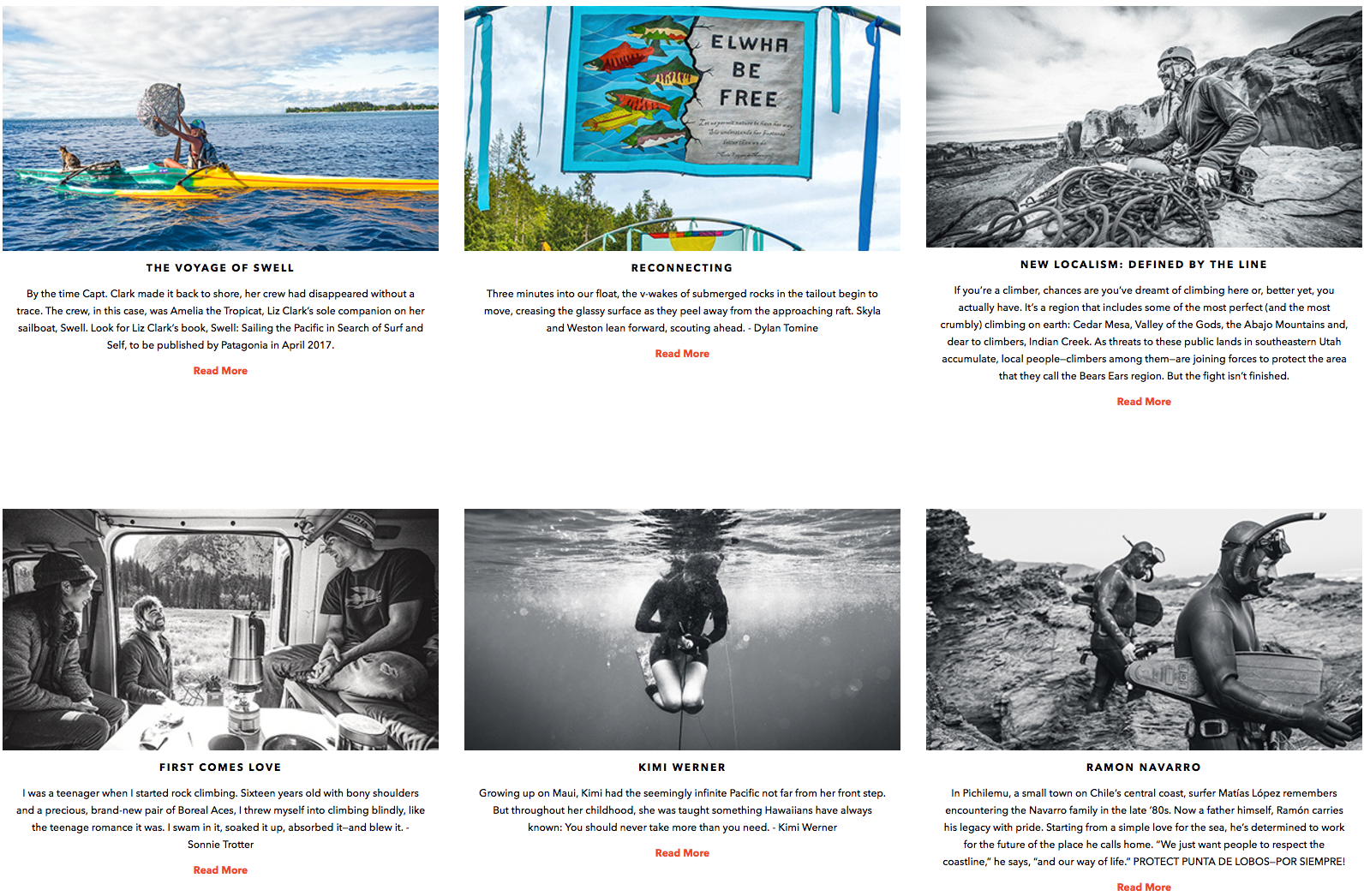Brands
What the Internet’s Best ‘About Us’ Pages Can Teach Brands
I’ve been writing website copy since I started out at FCB in 1994. One of my earliest assignments was for Nabisco, which became one of the first brands to launch a corporate web site. For the creative concept, we decided to turn the digital experience into a virtual town you could explore. The town hall housed corporate communications and human resources updates, a museum explained Nabisco’s storied history, and a test kitchen stored recipes. There was even a big green athletic field, a space where customers could “Treat Yourself Well”—timed to promote the debut of Snackwell’s. And, get this, the town even got dark at night.
The internet has come a long way since then, but websites are still essential homes for brands. Your homepage makes the first impression, signaling what’s new and important about your company. The ‘About Us’ page, usually one click away, is the second date, where visitors can understand more about a brand’s mission and purpose, which customers, prospects, employees, job-seekers, investors, and the press all crave.
But while homepage design and copy are labored over and always on display, About Us pages seem to be both under-appreciated and under-leveraged. That’s a missed content opportunity for too many brands.
As the content strategy leader at Prophet, I wanted to investigate what the biggest players were doing with their company pages to see if there were any patterns or tactics that could help marketers create value. I teamed up with my colleague Jesse Guzman, Prophet’s digital strategist, as we analyzed more than 100 About Us pages from a variety of sources including the Fortune 500®, Forbes Best Places to Work, and our own Prophet Brand Relevance Index®.
The vast majority of companies we looked at still have their work cut out for them, but through our research, we found a few brands that may have the blueprint for success.
Wide Broadcast
More than 65 percent of pages illustrated what we call a “wide broadcast” approach, which just means they offer a bit of content for everyone. For these brands, content gets evenly spread across topics such as leadership, corporate responsibility, and services. Within this approach, some brands prioritized a founding story, mission statement, or product and services descriptions.
During our research, we also paid close attention to structure. Was there a deliberate strategy for the page, or was it just a hodgepodge of information thrown together with little connective tissue? Three brands stood out when it came to cohesion.
Patagonia’s corporate transparency is famous in marketing circles, and its mission-driven company page reinforces that reputation. The page shares the corporate mission (“Build the best product, cause no unnecessary harm, use business to inspire and implement solutions to the environmental crisis”) but also goes into detail for why the company exists, almost like an open letter. The page is really more like a series of pages, since there are six links under the main “Company Info” header. There, users can find everything from field reports about the outdoors to thorough details of the brand’s history. Consumers can feel the sincerity, and marketers can respect how the corporate mission relates back to the entire site experience.

Accenture, meanwhile, goes down a different path from the altruistic philosophy. If Patagonia gives you a sense of the why, then Accenture is more concerned with the how. The professional services company has an About Us page driven by its services, which is unusual. (Only 3 percent of the brands we reviewed have this setup.) In this case, the page explains what Accenture does for customers, before helping users navigate its many sub-brands. The context is important because it gives a glimpse into the commitment to R&D and innovation that Accenture can use to separate itself from competitors.
Lastly, there’s Shire, a large biotech company that recently merged with Baxalta. Shire’s “Who We Are” page speaks the corporate narrative to a broader set of audiences—investors, job-seekers, patient advocates. The mission flags its role within its category (“Champions for people around the world who are struggling with rare diseases”) and then hands you off to content about history, leadership, corporate responsibility, and its operational model.
Modern Face
A majority of brands we looked at passed the modernity test. The design on these pages tends to be easily digestible, with bold headlines and mobile-friendly UX. But a sleek look doesn’t guarantee that a brand is maximizing the potential for an About Us page. The best examples in this category went above and beyond by working in visuals like videos and interactive elements. And as more companies get comfortable experimenting with multimedia, we expect them to apply those formats to their company pages in the future.
One of the most striking examples in our study is General Motors, which we expected to be a bit, well, old GM. The About Us page, however, is unconventional from the start, boldly declaring its mission “To Earn Customers for Life.” The design includes smart little animations and a vertical scroll like an interactive book. As you move down (and you’ll want to explore) you’re rewarded by illustrated cars zipping by, infinite scroll stats, and details about the company’s energy programs.
Nike is another case where a brand that could’ve coasted on its reputation put in a strong creative effort. The mission sits up front: “Bring Inspiration and Innovation to Every Athlete in the World,” with a parenthetical wink that “if you have a body, you are an athlete.”
The image-driven page continues to modules on company profile, executives, and “sustainable innovation”, which, yes, is apparently a thing. The copy tries to be a tad too clever at times, but that doesn’t take away from how great the section looks.

Then there’s GE, which has consistently received high marks for its savvy digital presence. Rather than the traditional About Us page, GE actually has multiple iterations linked to different purposes (Building, Curing, Moving, Powering). You have to dig a bit to find them, but the robust experience on the GE site is rich with interesting facts and high-quality stories about company projects, past and present.
Pure and Simple
The main reason most people overlook the About Us page is because it’s associated with an inherent stiffness. Brands don’t want to offend or alienate anyone, so they play it safe to appeal to everyone. As we’ve seen firsthand, that strategy doesn’t work. Each brand has a voice and a style, and it helps when they embrace that instead of just posting headshots of the C suite.
As you enter the McDonald’s About Us page, for instance, a sign-up box pops up for the company newsletter, unique among the 100 brands we reviewed. It’s easy to hate pop-ups, but in this case, the choice makes sense. If you’re already putting in the effort to learn about the company, then this is another chance to build a long-term relationship with the user. The top of the page is dedicated to the company’s origins, specifically highlighting founder Ray Kroc with a few brief sentences. As you scroll down, you can learn how the humble beginnings led to billions of customers served.
Speaking of billions served—that takes us to our last example: Alphabet, or the artist formerly known as Google. In addition to the unique URL (https://abc.xyz), Alphabet’s company page is among the simplest and most creative, an expandable letter from Larry Page that weaves in mission, history, and future plans. The lesson here is to be yourself. Telling your story in a clear way doesn’t hurt either.
If you’d like to see the complete list of pages we reviewed or have any questions about our analysis, you can email the author at mzucker@prophet.com or reach him at @matzucker on Twitter.
Image by Pexels / CC ZeroGet better at your job right now.
Read our monthly newsletter to master content marketing. It’s made for marketers, creators, and everyone in between.




